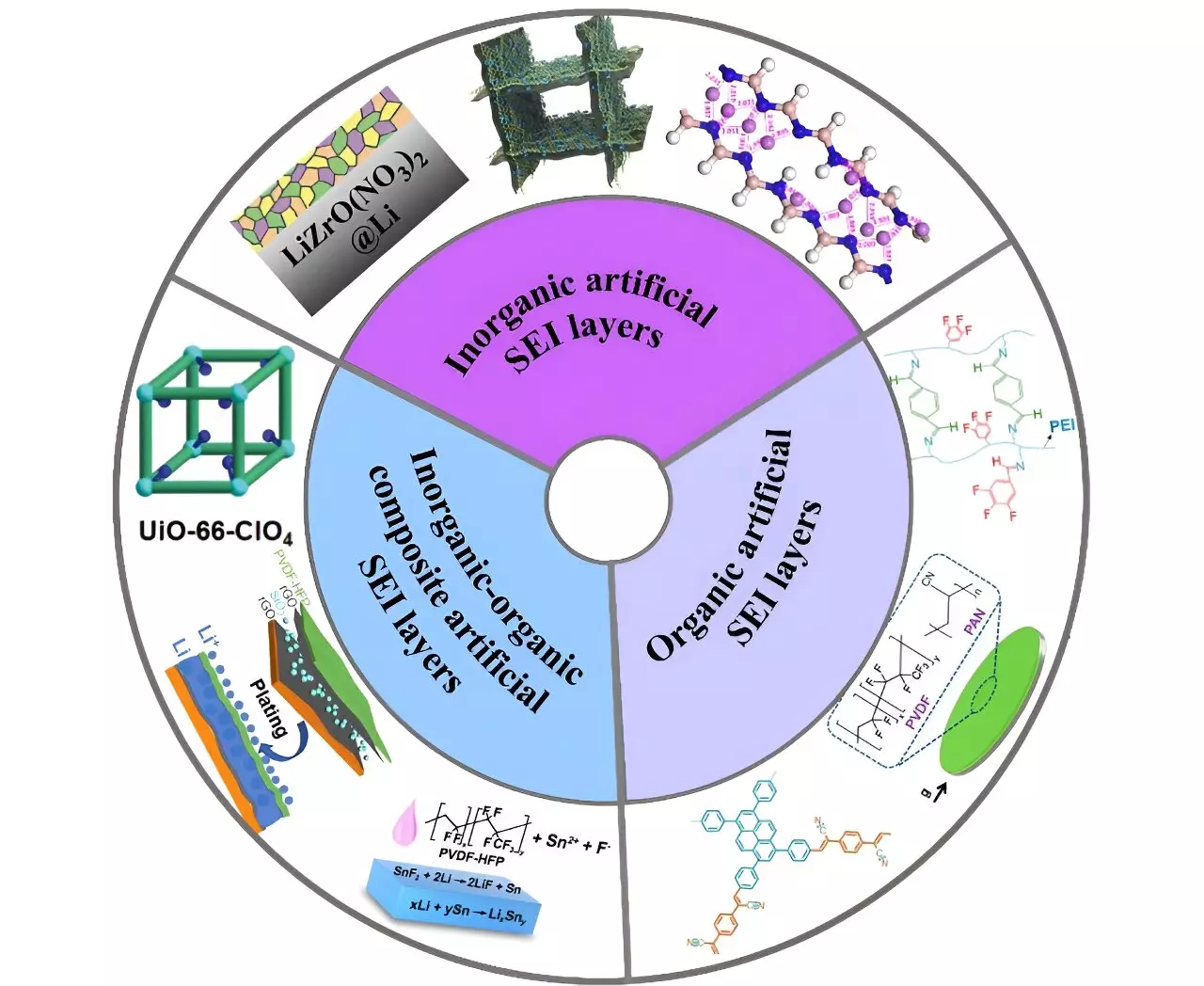The use of lithium metal as the anode for batteries is considered a promising option due to its better energy density compared to other materials. However, the interface between the electrode and electrolyte presents several challenges that need to be addressed for a safer and more efficient battery system. Researchers have been exploring the replacement of the graphite anode with a lithium metal anode to achieve higher energy density in batteries. Unfortunately, the natural solid-electrolyte interphase (SEI) formed between the lithium metal anode and the electrolyte is brittle and susceptible to degradation, resulting in poor performance and lifespan. To overcome these limitations, scientists have proposed the use of artificial solid electrolyte interphase (ASEI) as a substitute for the natural SEI. This innovation aims to improve the safety, reliability, and power output of lithium metal batteries, making them suitable for applications such as electric vehicles. The findings of this research were recently published in Energy Materials and Devices.
The inherent reactivity of lithium metal anode with the electrolyte is a major concern. During battery operation, a passivation layer called a solid-electrolyte interphase forms on the surface of the lithium metal. However, this natural SEI is prone to brittleness and fragility, leading to diminished lifespan and performance. Additionally, the growth of dendrites, tree-branch-like structures, during battery charging poses internal damage, short-circuiting, and safety risks. These weaknesses limit the practicality of lithium metal batteries and necessitate the development of strategies to improve the performance and safety of the anode.
Researchers have identified key strategies to enhance the lithium metal anode’s performance and mitigate the challenges associated with its use. One approach is to homogenize the distribution of lithium ions, reducing their deposition on negatively charged areas of the battery. This strategy helps prevent dendrite formation, ensuring the battery’s longevity and preventing short-circuits. Furthermore, facilitating the diffusion of lithium ions while maintaining electrical insulation between layers promotes the structural and chemical integrity of the battery during cycling. Minimizing strain at the electrode-electrolyte interface is crucial for establishing proper connectivity between layers, a fundamental aspect of battery functionality.
Among the strategies explored, polymeric ASEI layers and inorganic-organic hybrid ASEI layers have demonstrated significant potential. Polymeric layers can be easily adjusted in terms of strength and elasticity, allowing for customization. Moreover, these layers possess functional groups similar to electrolytes, ensuring compatibility and enhancing overall performance. On the other hand, inorganic-organic hybrid layers offer advantages such as reduced layer thickness and improved component distribution within the layers, resulting in enhanced battery performance.
While the future of ASEI layers appears promising, several improvements are necessary to realize their full potential. One crucial area for enhancement is the adhesion of ASEI layers to the metal surface, as it directly impacts the battery’s function and longevity. Stability in both the structure and chemistry within the layers is another area that requires attention. Additionally, minimizing the thickness of the ASEI layers is essential for improving the energy density of lithium metal electrodes. Addressing these challenges will pave the way for the development of improved lithium metal batteries.
The advancement of lithium metal batteries relies on overcoming the limitations imposed by the natural solid-electrolyte interphase. Researchers propose the use of artificial solid electrolyte interphase (ASEI) as a viable solution to enhance the safety, reliability, and power output of these batteries. Through strategies such as homogenizing lithium ion distribution, facilitating ion diffusion, and reducing strain at the electrode-electrolyte interface, ASEI layers can address the key challenges associated with lithium metal anodes. Promising options include polymeric ASEI layers and inorganic-organic hybrid ASEI layers, offering adjustability, compatibility, and improved component distribution. However, further improvements in adhesion, stability, and layer thickness are necessary to fully exploit the potential of ASEI layers in lithium metal batteries. With continued research and development, an improved generation of lithium metal batteries is within reach, supporting the transition towards a carbon-free economy and revolutionizing energy storage for various applications.



Leave a Reply